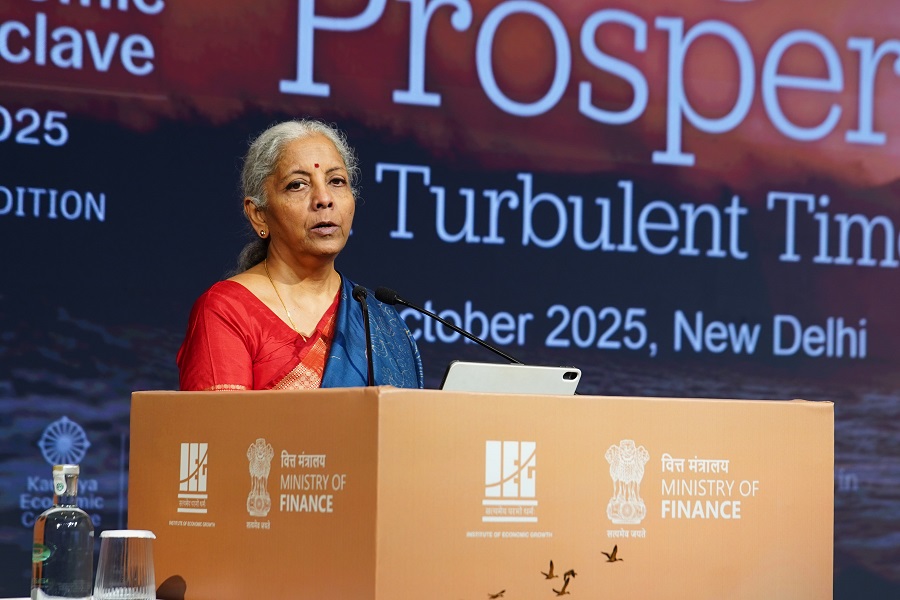The Economy Observer : State of Affairs: Combined fiscal deficit at 51% of BE in 9MFY23 By Motilal Oswal Financial Services

States’ capex grew but Center’s contracted in 3QFY23
* Based on provisional data of 18 large states, their total spending grew 6.4%/12% YoY in 3QFY23/9MFY23. Total receipts too grew slowly at only 14.3%/21.6% YoY in 3QFY23/9MFY23. Consequently, states’ aggregate fiscal deficit came in at INR1.3t/INR3.8t (or 1.8%/1.9% of GDP) in 3QFY23/9MFY23.
* As a percentage of BE, 9MFY23 fiscal deficit stood at only ~43%, lower compared to Covid levels (70% on average during FY21-22) as well as pre-Covid levels (53% during FY18-20).
* Our state-wise analysis suggests that three states, JH, MH and OD, witnessed a fiscal surplus in 9MFY23, while the remaining 15 states witnessed a fiscal deficit in the range of 16%-114% of their respective FY23 BEs. The 9MFY23 fiscal deficit for AP and AS was already above their full-year targets, while it was between 22% and 42% for many large states such as KA, MP, TN, UP and WB. ? Strong growth in devolution to states, combined with higher grants-in-aid, led to strong growth of 22% YoY in total transfers to the states, which drove total receipts of states in 3QFY23. States’ own receipts (tax and nontax) grew 9.2% YoY in the quarter, the slowest pace in seven quarters.
* On the spending front, while states’ revenue spending grew at an eight-quarter low rate of 5.5% YoY in 3QFY23, capital spending (including loans and advances) grew 11.9% YoY. On a YTD basis, both revenue and capital spending witnessed slower growth, leading to overall lower spending of states in 9MFY23.
* A combined analysis of the central and state governments suggests that while total receipts grew at a sevenquarter low rate of 3.3% YoY (13.9% YoY in 9MFY23), total spending by the General Government (GG) grew at a three-quarter low rate of 7.9% YoY in 3QFY23 (10.8% YoY in 9MFY23). Further, within total spending, combined revenue spending was up 9.5% YoY (11.3% in 9MFY23) in the quarter, while combined capital spending grew just 0.3% YoY (8.1% YoY in 9MFY23) in 3QFY23.
* Assuming 9.5% YoY growth in nominal GDP in 3QFY23, our calculations suggest the GG fiscal deficit was 7.3%/6.5% of GDP in 3Q/9MFY23, the lowest in the first nine-month period in the previous decade.
* As a % of BEs, while states’ aggregate fiscal deficit was just 43.1% in 9MFY23, it was 59.8% for the Center, implying a combined fiscal deficit of just 51.3% of FY23 BE during 9MFY23, lower than 54.5% in 9MFY22 and way lower than an average of 84% in the previous decade (taking first nine months’ data only).
* Overall, a combination of higher receipts (64% of BEs) and slower spending growth (just 44% of BEs) helped states’ keep the fiscal deficit contained at 51% of BEs (or 6.5% of GDP) in 9MFY23. Notably, states’ capex picked up in 3QFY23, which was offset by the Center, leading to an overall growth of just 0.3% YoY in combined fiscal capex. It is likely that states will not meet their spending targets in FY23. Further, states have borrowed only 69% of the planned market borrowings as of mid-Feb’23, which suggests that their aggregate deficit is likely to be below 2.5% of GDP in FY23 v/s the target of 3.4% of GDP.
To Read Complete Report & Disclaimer Click Here
For More Motilal Oswal Securities Ltd Disclaimer http://www.motilaloswal.com/MOSLdisclaimer/disclaimer.html SEBI Registration number is INH000000412
Above views are of the author and not of the website kindly read disclaimer
.jpg)




















